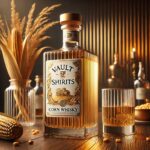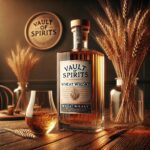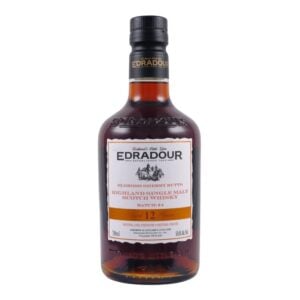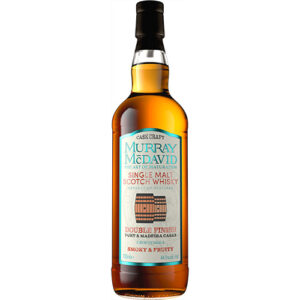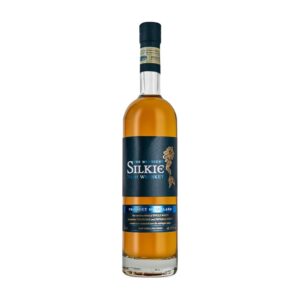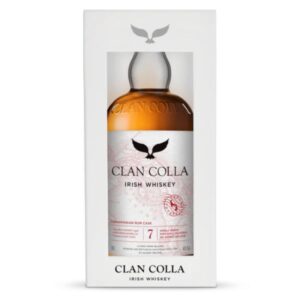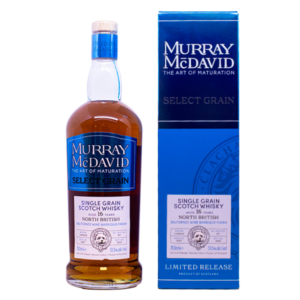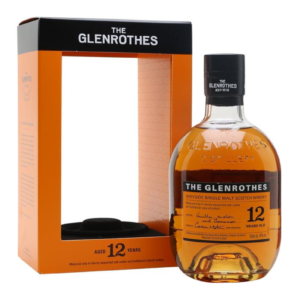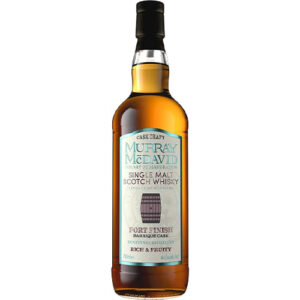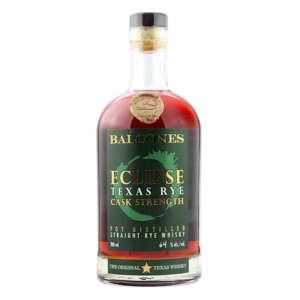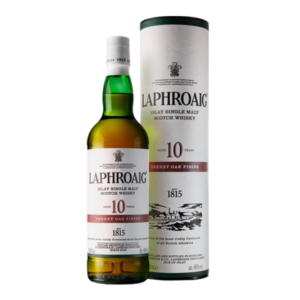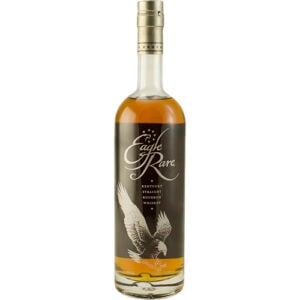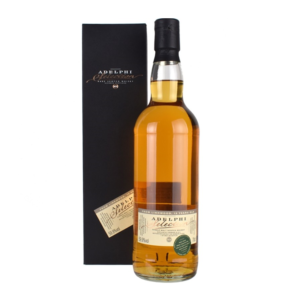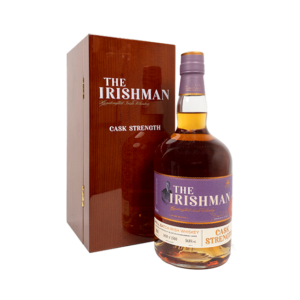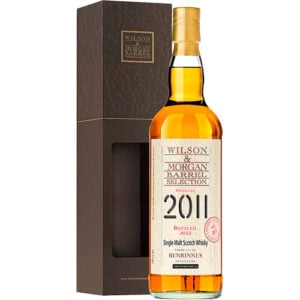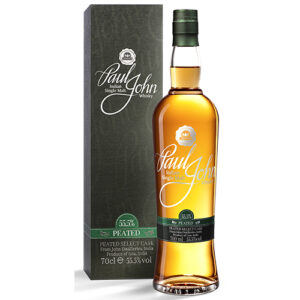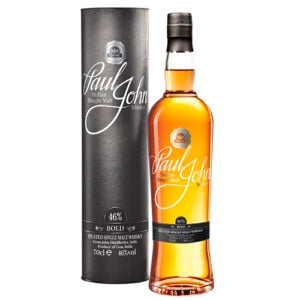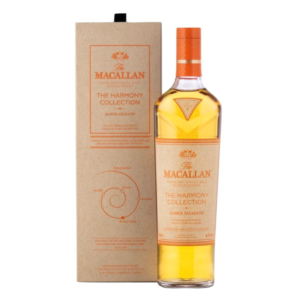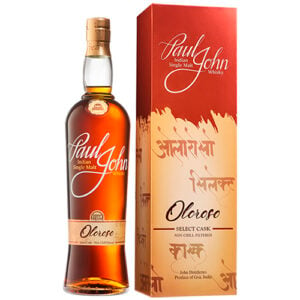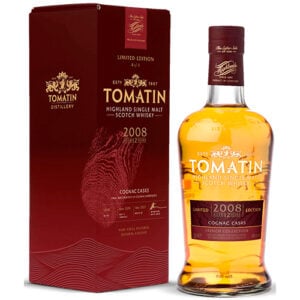Showing 1–24 of 492 resultsSorted by popularity
Whisky – The Complete Guide
TL;DR: In Brief
- Whisky is characterized by its complex flavor profile ranging from smoky and peaty to sweet and fruity
- Primarily made from fermented grain mash (barley, corn, rye, or wheat) and defined by aging in wooden casks
- Found in several styles including Scotch, Bourbon, Irish, Japanese, and Rye whisky
- Best enjoyed neat or with a drop of water in a Glencairn glass, and can be experienced in classic cocktails like Old Fashioned or Whisky Sour
Disclaimer: This guide is intended for informational purposes for adults over 18 years of age. Vault of Spirits encourages responsible alcohol consumption.
Introduction to Whisky
Whisky has a rich history and fascinating craftsmanship behind it. From its origins in medieval Scotland and Ireland to its global popularity today, this spirit has evolved to become one of the world’s most treasured alcoholic beverages.
This guide provides insight into the production, flavor notes, and enjoyment of whisky, whether you’re a beginner or an experienced enthusiast.
With centuries of tradition and modern innovation, whisky continues to captivate drinkers with its remarkable depth and variety.
How Did Whisky Originate?
From Past to Present
Whisky’s origins trace back to medieval monasteries in Scotland and Ireland around the 15th century.
Monks initially distilled barley beer into a spirit for medicinal purposes, calling it “uisge beatha” or “water of life” in Gaelic.
As knowledge spread beyond monastery walls, whisky production became a common practice among farmers who used surplus grain to create a valuable commodity that wouldn’t spoil.
By the 18th century, commercial distilleries began to emerge, laying the foundation for today’s global industry.
Which Historical Milestones Have Shaped Whisky?
The 1494 mention in Scottish tax records marks the first documented evidence of whisky distillation.
The Excise Act of 1823 in Scotland revolutionized the industry by legitimizing previously illegal distilleries and establishing the licensing system.
Prohibition in America (1920-1933) nearly destroyed American whiskey culture but ultimately strengthened regulations after repeal.
The development of the continuous still in the early 19th century enabled more efficient production and contributed to the rise of blended whiskies.
How Has Whisky Influenced Cultural Traditions?
In Scotland, whisky has become a symbol of national identity, closely tied to clan heritage and celebrations.
The traditional Scottish toast “Slàinte Mhath” (pronounced “slahn-juh vah”) meaning “good health” accompanies whisky drinking at important gatherings.
In Kentucky, bourbon whiskey is deeply embedded in southern hospitality and is essential to the Derby Day mint julep tradition.
Japanese culture has embraced whisky-making as a revered art form, infusing it with principles of perfection and harmony.
Why Is Whisky Popular Today?
The craft spirits movement has fueled interest in authentic, artisanal products with genuine heritage.
Television shows like “Mad Men” rekindled interest in classic whisky cocktails and connoisseurship.
The expansion of global production beyond traditional regions has introduced new expressions and styles to enthusiasts.
Increased consumer education and appreciation for premium spirits has elevated whisky to a collectible investment beyond just a beverage.
How Is Whisky Made?
Which Raw Materials Are Used in Production?
The foundation of any whisky starts with carefully selected ingredients that define its character and style.
Primary ingredients:
- Grains (barley, corn, rye, wheat) – Provide fermentable sugars and distinct flavor profiles
- Water – Influences character through mineral content and is crucial in every production stage
- Yeast – Converts sugars to alcohol during fermentation and contributes subtle flavor compounds
Regional variations occur naturally, with Scotch primarily using malted barley, bourbon requiring at least 51% corn, and rye whisky featuring its namesake grain.
How Does the Fermentation Process Work?
Fermentation begins after the grains are milled, mashed with hot water, and cooled to create a sugary liquid called wort.
Specially selected yeast strains are added to the wort in large fermentation vessels called washbacks.
Over 48-96 hours, the yeast converts sugars into alcohol and carbon dioxide, creating a beer-like liquid called wash with 7-10% ABV.
During fermentation, yeast produces hundreds of flavor compounds (esters, aldehydes, and fatty acids) that contribute to the whisky’s final character.
Which Distillation Techniques Are Used?
Distillation concentrates alcohol and selects which flavors from fermentation will appear in the final spirit.
Common distillation methods:
- Pot Distillation – Traditional method using copper pot stills; produces more flavorful spirit with more congeners
- Column Distillation – Continuous process using tall stills; creates cleaner, lighter spirit at higher alcohol strengths
- Double Distillation – Common in Scotch; balances flavor concentration with purity
The distiller’s skill lies in making precise “cuts” – separating the desirable “heart” from the undesirable “heads” and “tails” of the distillation run.
What Is the Significance of Maturation?
New-make spirit is colorless and harsh before entering wooden casks, where the true magic of whisky creation occurs.
Oak casks contribute up to 70% of the final flavor through several key processes:
Wood sugars dissolve into the spirit, adding sweetness and vanilla notes.
Controlled oxidation softens harsh compounds and develops complexity.
The porous nature of wood allows gentle breathing, which helps unwanted compounds evaporate.
Maturation duration varies widely, from the minimum 3 years for Scotch to decades for premium expressions, with the environment (temperature, humidity) dramatically affecting aging speed.
Which Regions Are Known for Whisky?
Where Are the Best Variants Produced?
Scotland divides into distinct whisky regions: Highlands (robust, often heathery), Speyside (elegant, fruity), Islay (intensely peaty, maritime), Lowlands (lighter, grassy), and Campbeltown (slightly salty with light peat).
Kentucky and Tennessee lead American bourbon production with limestone-filtered water creating distinctive soft character.
Ireland produces smoother, often triple-distilled whiskeys with less peat influence.
Japan has established itself as a premium whisky producer with meticulous attention to detail and Scottish-inspired techniques.
Emerging regions include Taiwan, India, Australia, and various European countries bringing fresh approaches to the tradition.
How Do Geography and Climate Affect the Flavor?
Scotland’s cool, damp climate allows for slow maturation and minimal evaporation, creating complex spirits over longer periods.
Kentucky’s hot summers and cold winters force whiskey in and out of the wood, accelerating maturation and creating rich, sweet profiles.
Coastal distilleries often show maritime influences with saline notes from sea air permeating the casks.
Altitude affects barometric pressure and oxygen levels, with high-altitude aging (like in Colorado) creating unique flavor development patterns.
What New Trends Are Seen in Whisky Production?
Cask finishing in wine, rum, or other spirit barrels has become widespread, adding new dimensions to traditional whiskies.
Craft distillers are experimenting with heritage and alternative grains like quinoa, millet, or heirloom corn varieties.
Terroir-focused production emphasizes local ingredients and environmental influences on flavor.
Accelerated aging techniques using smaller barrels, sound waves, or temperature cycling are being explored by innovative producers.
What Do the Various Quality Designations Mean?
Age statements (10-year, 18-year, etc.) indicate the youngest whisky in the bottle, not the average age.
Single malt means whisky from one distillery made from 100% malted barley.
Blended whisky combines malt and grain whiskies from different distilleries for consistency.
Straight bourbon must be aged at least two years in new charred oak barrels with no additives.
Bottled-in-bond indicates American whiskey that is the product of one distillation season, from one distillery, aged at least four years in a federally bonded warehouse, and bottled at 100 proof.
How Does Whisky Taste?
What Characterizes the Typical Flavor Profile?
Whisky presents an extraordinary range of flavors that develop through production methods and aging.
Typical aromas:
- Grain & Cereal – Malty, biscuity, bread-like, oatmeal
- Wood Influence – Vanilla, caramel, toffee, spice, coconut, cinnamon
- Fruit & Floral – Orchard fruits, dried fruits, citrus, heather, rose
The mouthfeel ranges from light and delicate to rich and oily, with finish lengths varying from brief to seemingly endless.
Contrary to popular belief, “smooth” isn’t necessarily a quality indicator – many connoisseurs prize textural complexity and a certain pleasant “bite.”
How Does the Flavor Vary Between Different Styles?
Scotch single malts often display heather, honey, and orchard fruits, with coastal variations showing maritime salinity and island expressions featuring medicinal peat smoke.
Bourbon presents pronounced sweetness with vanilla, caramel, and baking spices from new charred oak, underpinned by corn’s natural sweetness.
Irish whiskey typically offers a smoother profile with honey, malt, and grass notes, owing to triple distillation and minimal peat use.
Japanese whisky often shows remarkable precision with delicate fruit notes, light honey, and subtle oak influence.
Rye whiskey delivers pronounced spiciness with notes of black pepper, cinnamon, and dried fruit.
How Does the Flavor Develop with Age?
Young whiskies (3-5 years) typically show more primary grain character with vibrant, sometimes spirity notes.
Mid-aged expressions (8-15 years) develop more complexity as wood influence increases, often showing optimal balance between spirit and cask.
Extended aging (18+ years) brings concentrated flavors, often with dark fruits, chocolate, tobacco, and leather notes, though wood can sometimes dominate.
Extremely old whiskies (30+ years) can develop unique “rancio” qualities similar to aged cognac, with tropical fruits and furniture polish notes, though they risk becoming overly tannic.
What Signs Reveal High Quality?
Balance is paramount – no single element should overwhelm the others, with spirit character and wood influence in harmony.
Complexity reveals itself as the whisky opens up, with layers of flavor unfolding rather than presenting as one-dimensional.
Mouthfeel should have appropriate weight and texture, neither too thin nor artificially viscous.
The finish should linger pleasantly, evolving rather than simply fading, with the best examples leaving a satisfying impression long after the sip.
How Is Whisky Best Enjoyed?
What Is the Optimal Serving Method?
Neat (straight, without ice or mixers) is preferred by many enthusiasts to experience the full character.
Adding a few drops of spring water can “open up” whisky by lowering alcohol perception and releasing volatile compounds.
On the rocks (with ice) chills and slightly dilutes the whisky, which some prefer for higher-proof expressions.
A “whisky flight” of several small pours allows for comparative tasting and deeper appreciation of different styles.
There’s no “wrong way” to enjoy whisky – personal preference should guide your choice.
Which Glass and Temperature Are Ideal?
The tulip-shaped Glencairn glass has become the industry standard, concentrating aromas while allowing swirling.
Traditional tumbler glasses are fine for casual drinking but don’t focus aromas as effectively.
Room temperature (60-65°F/15-18°C) is generally ideal for appreciating the full range of flavors.
Slightly chilled can work well for high-proof whiskies, as it tempers the alcohol heat.
Avoid very cold temperatures as they mask subtle flavor nuances.
How Do You Taste Like an Expert?
Observe the color first, noting amber depth and clarity – though remember color can come from caramel coloring in some whiskies.
Nose gently (keep mouth slightly open to avoid alcohol burn) and take time to identify different aroma compounds.
Take a small sip and let it coat your entire mouth before swallowing, noting how flavors develop across your palate.
Consider the finish – how long flavors persist and how they evolve after swallowing.
Take notes using specific descriptors rather than just “good” or “smooth” to build your sensory vocabulary.
Which Dishes Complement Whisky?
Dark chocolate pairs wonderfully with sherried whiskies, highlighting complementary richness.
Aged cheeses match well with more robust styles, with blue cheese and peaty Islay whiskies being a classic combination.
Smoked salmon or other smoked foods create fascinating flavor bridges with peated expressions.
Game meats like venison complement the earthy, spicy notes in many bourbon and rye whiskies.
Sweet desserts can pair with sweeter bourbon styles, though be careful not to overwhelm delicate single malts.
Which Cocktails Can Be Made with Whisky?
Which Classic Cocktails Should You Know?
The world of whisky cocktails ranges from simple two-ingredient drinks to complex layered creations.
Old Fashioned
- Ingredients: Bourbon or rye whiskey, sugar cube, Angostura bitters, orange peel
- Preparation: Muddle sugar with bitters, add whiskey and ice, stir, and garnish with orange peel
- History: Originated in the early 1800s, considered the original “cocktail” definition
Manhattan
- Ingredients: Rye or bourbon whiskey, sweet vermouth, Angostura bitters, maraschino cherry
- Preparation: Stir ingredients with ice, strain into a chilled glass, garnish with cherry
- History: Created at the Manhattan Club in New York in the 1870s
Whisky Sour
- Ingredients: Whisky, fresh lemon juice, simple syrup, optional egg white
- Preparation: Shake ingredients with ice, strain into rocks glass
- History: First documented in 1862 in Jerry Thomas’s bartending guide
Which Modern Cocktails Are Worth Trying?
Penicillin combines blended Scotch, lemon juice, honey-ginger syrup and an Islay whisky float for a smoky-sweet modern classic.
The Paper Plane balances bourbon with Aperol, Amaro Nonino, and lemon juice in perfect equal parts.
The Gold Rush simplifies a whiskey sour by using honey syrup instead of simple syrup for added complexity.
The New York Sour adds a red wine float to a traditional whiskey sour for visual appeal and flavor depth.
Japanese Highball elevates the whisky and soda to an art form with precise ice, carbonation, and stirring technique.
How Is Whisky Enjoyed Neat?
For exploring rare or expensive whiskies, drinking neat (without ice, water, or mixers) provides the purest experience.
Start with small sips to acclimate your palate to the alcohol strength.
Keep your mouth slightly open when nosing to prevent alcohol burn in your nasal passages.
Consider trying with a few drops of spring water, which can “open up” flavor molecules, especially in cask-strength whiskies.
Take your time – a good whisky can evolve in the glass over 30-45 minutes.
Which Homemade Variants Can You Experiment With?
Infused whisky can be created by adding ingredients like vanilla beans, cinnamon sticks, or dried fruit to a bottle for 1-3 days.
Home blending allows you to marry different whiskies to create unique expressions tailored to your taste.
Fat-washing with bacon, butter, or coconut oil adds savory or creamy notes to whisky for distinctive cocktails.
Oak chip aging in small batches can add wood influence to younger whiskies, though requires experimentation.
Remember to keep a portion of the original whisky for comparison to evaluate your results.
What Should You Know Before Buying Whisky?
Which Details Should You Pay Attention to When Buying?
Check for age statements, which indicate the youngest whisky in the bottle (though no age statement doesn’t necessarily mean lower quality).
Understand proof/ABV (alcohol by volume) – higher percentages generally offer more concentrated flavors but more alcohol heat.
Look for terms like “natural color” or “non-chill filtered” which indicate less processing.
Research the distillery’s reputation and production methods – craft presentation often reflects craft production.
For collectible bottles, verify authenticity and understand that limited editions may command higher prices.
What Do You Get for Your Money in Different Price Ranges?
Entry-level ($20-35): Solid, dependable whiskies suitable for everyday enjoyment and cocktails, though typically younger with less complexity.
Mid-range ($40-80): The sweet spot for many enthusiasts, offering good complexity, often with age statements and distinctive character.
Premium ($90-200): Notable age statements, special cask finishes, or unique production methods offering significant complexity and depth.
Super-premium ($200+): Rarities, extensive aging, special editions, and collector’s items – not necessarily better tasting but often more exclusive.
Price doesn’t always correlate perfectly with quality – some mid-range whiskies outperform much more expensive bottles.
How Is Whisky Properly Stored?
Keep bottles upright, unlike wine, as the high alcohol content can degrade cork if in constant contact.
Store away from direct sunlight in a cool, temperature-stable environment to prevent flavor degradation.
Once opened, a bottle is best consumed within 1-2 years, though properly stored whisky can remain good for many years.
As the bottle empties, consider transferring to a smaller bottle to reduce oxidation from excess air contact.
Avoid refrigeration for long-term storage as it can cause some compounds to precipitate out of the whisky.
Is Whisky a Good Investment?
Rare single malts from established distilleries (particularly Scotch) have appreciated significantly in value over the past decade.
Limited editions, distillery closures, and notable releases can become highly collectible.
Japanese whiskies with age statements have seen remarkable value increases due to supply shortages.
Proper storage is crucial for investment bottles to maintain condition and provenance.
Remember that most whisky is meant to be enjoyed, not just collected – the greatest value may be in the experience rather than financial return.
Which Brands Do We Recommend?
What’s Best for Beginners?
Glenmorangie Original (Scotch) offers a gentle, approachable introduction to single malt with honey and citrus notes.
Buffalo Trace (Bourbon) provides classic bourbon character with balanced sweetness at an accessible price point.
Jameson (Irish) delivers smooth, easy-drinking character with light fruit and vanilla notes.
Monkey Shoulder (Blended Scotch) blends three Speyside malts for a versatile, honeyed profile suitable for sipping or mixing.
Highland Park 12 (Scotch) introduces gentle peat smoke alongside honey and heather for a well-rounded experience.
What Will Impress Enthusiasts?
Springbank 15 (Scotch) showcases traditional production methods with complex dried fruit, nuts, and subtle smoke.
Redbreast 12 Cask Strength (Irish) amplifies the classic pot still character with rich spice and fruit at full strength.
Four Roses Single Barrel (Bourbon) offers sophisticated complexity with distinct recipes yielding varied profiles.
Nikka From The Barrel (Japanese) delivers concentrated fruit, spice, and oak in a powerful yet balanced expression.
Glendronach 18 (Scotch) presents luxurious sherry-cask maturation with dried fruit, chocolate, and spice.
Which Bottles Are Most Sought After?
Pappy Van Winkle Bourbon (particularly the 20 and 23-year expressions) has achieved cult status with waitlists and secondary market values many times retail price.
Macallan rare age statements and limited editions are highly prized by collectors worldwide.
Age-statement Japanese whiskies from Yamazaki, Hakushu, and Yoichi have become increasingly scarce and valuable.
Buffalo Trace Antique Collection releases each autumn to overwhelming demand.
The annual Diageo Special Releases featuring rare expressions from classic and “ghost” distilleries attract global attention.
Where Do You Get the Most for Your Money?
Ardbeg 10 (Scotch) delivers impressive peat complexity and coastal character at a relatively accessible price point.
Wild Turkey 101 (Bourbon) offers rich, full-flavored bourbon with notable age at a remarkably affordable price.
Powers John’s Lane (Irish) provides exceptional pot still character and sherry cask influence at a fair price.
Ledaig 10 (Scotch) presents fantastic smoky, maritime character that rivals more expensive peated malts.
Knob Creek Single Barrel (Bourbon) delivers high-proof, well-aged bourbon with significant barrel character at a competitive price.
Frequently Asked Questions
What Is Whisky?
Whisky is a distilled alcoholic beverage made from fermented grain mash, typically aged in wooden casks.
Different regions have specific definitions regarding ingredients, production methods, and aging requirements.
The spelling varies by region – “whisky” is used in Scotland, Canada, and Japan, while “whiskey” is common in Ireland and the United States.
Common grains used include barley, corn, rye, and wheat, with each contributing distinct flavor characteristics.
How Is Whisky Produced?
Production involves five key stages: malting (converting grain starches to fermentable sugars), mashing (extracting these sugars with hot water), fermentation (converting sugars to alcohol using yeast), distillation (concentrating and purifying the alcohol), and maturation (aging in wooden casks).
Regional variations in techniques significantly influence the final product’s character.
The entire process from grain to bottle typically takes a minimum of 3 years and often much longer.
Many distilleries still employ traditional methods alongside modern technology to maintain their distinctive house style.
What Characterizes Whisky?
Whisky is characterized by its amber color (from barrel aging), complex flavor profile, and alcohol content typically between 40-60% ABV.
Key flavor components include grain character, wood influence (vanilla, caramel, spice), and fermentation notes (fruity, floral).
Regional styles have distinctive profiles, from the sweet corn notes of bourbon to the smoky peat of Islay Scotch.
Unlike many spirits, whisky continues to evolve in the bottle over time, though much more slowly than in casks.
Where Do You Buy Whisky?
Specialty liquor stores offer the best selection and knowledgeable staff who can provide guidance.
Online retailers have expanded access to rare and international expressions, though shipping regulations vary by location.
Distillery visits provide unique opportunities to purchase exclusive bottlings not available elsewhere.
Auction sites like Whisky Auctioneer and Whisky Exchange Auctions offer access to rare and discontinued bottles.
Vault of Spirits offers a carefully curated selection of exceptional whiskies from around the world, with expert guidance for both newcomers and collectors.




